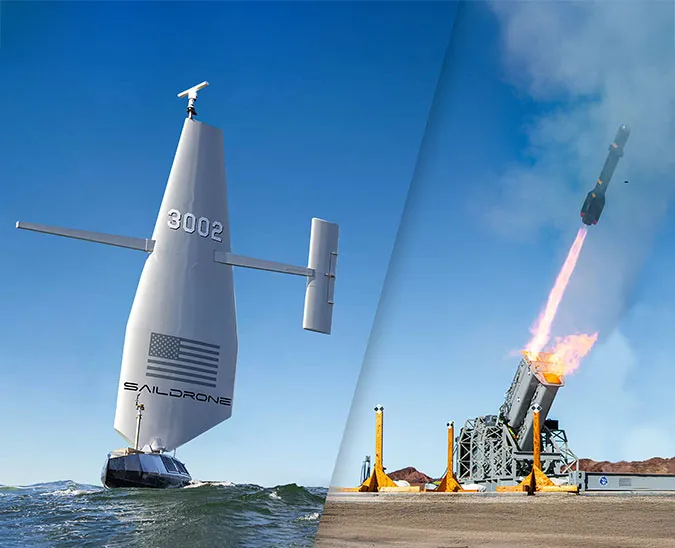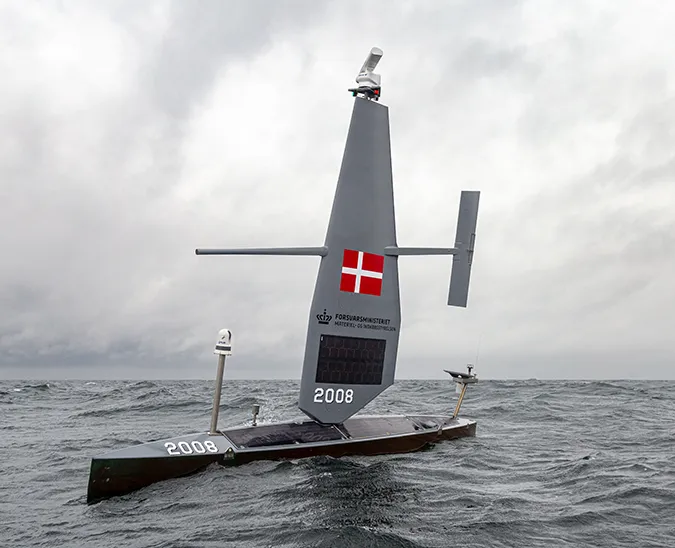Published on
Author
The United States Coast Guard is responsible for safeguarding the world’s largest Exclusive Economic Zone, encompassing 4.5 million square miles, and more than 100,000 miles of US coastline and inland waterways. The agency’s mission includes a wide variety of operations, including search and rescue, fisheries law enforcement, maritime environmental response, and marine safety. Throughout the month of October, Saildrone is demonstrating how its fleet of uncrewed surface vehicles (USVs), as one example of USV technology, could help the USCG meet its mission charter and improve mission performance through the use of autonomous maritime domain awareness (MDA).
“It’s clear that continued advancements in computing technology and general advancements in autonomous systems represent a potential gain in the Coast Guard’s ability to conduct our mission,” said Commander D. Blair Sweigart, head of the Modeling Simulation and Analysis Branch at the USCG Research & Development Center. “When it comes to MDA, there are areas of the globe within our responsibility where it is difficult to maintain a persistent presence using crewed vessels, aircraft, or other assets that require direct human operation. Uncrewed assets have opened up a world of possibility to help the USCG maintain improved awareness in some of these areas so that we may gain valuable insights into activities around the globe.”
The purpose of the demonstration is to explore how the Coast Guard could use USVs to enhance MDA, focusing on the vehicles’ capabilities and their limitations. Saildrone is one of two USV systems involved in the demonstration that is helping the Coast Guard better understand the general capabilities of this type of technology.
“We certainly recognize that this model of saildrone specifically is not the only long-endurance USV; we’re exploring this model and keeping an open mind as to what solutions USVs in general, potentially including other configurations or models of saildrone, might provide, and how those different solutions could contribute toward various aspects of our mission set,” said Cdr. Sweigart.
During the October demonstration, Saildrone is demonstrating how different formations of USVs can achieve different objectives: shipping lane surveillance, illegal fishing activity, environmental monitoring, and large-area search and rescue.
“The saildrones are on track to meet the demonstration objectives in terms of endurance and detection range, and they’ve also shed light on patterns of activities that would be difficult to detect without a persistent at-sea presence. We generally have a good idea of the preferred locations for recreational boating, fishing, etc., in any given region, but it’s entirely different to be able to watch and observe that activity in real time,” said Cdr. Sweigart.
Read more: Saildrone Begins Demo of Autonomous MDA Capabilities for USCG
Resources
Megan Eckstein, “Coast Guard Begins At-Sea Testing of Unmanned Surface Vehicles to Tackle Illegal Fishing, Crime,” USNI News, October 15, 2020
United States Coast Guard, “Coast Guard Awards Contracts for Maritime Domain Awareness Study,” press release, February 25, 2020





